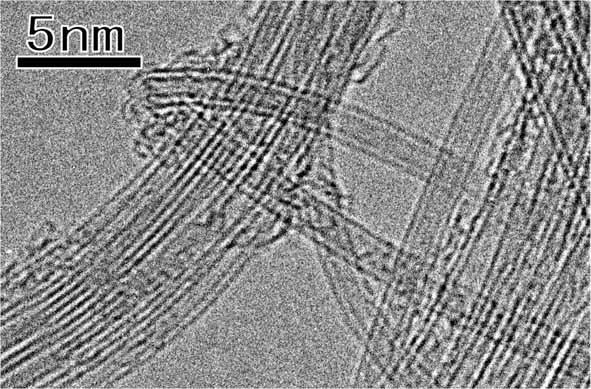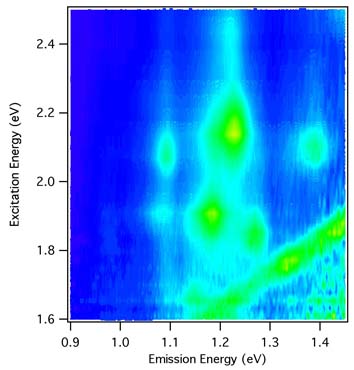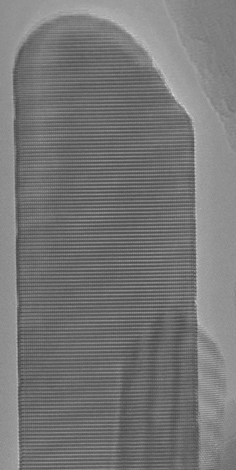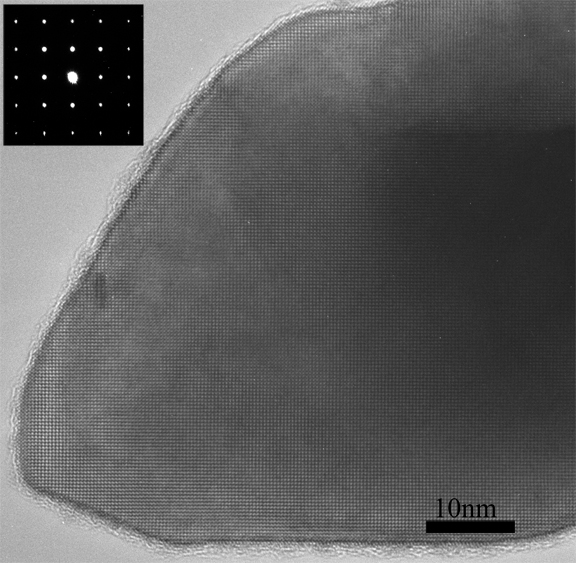My research area is centered on nanoscale science and technology using Raman and Infrared spectroscopies. Actually, I am studing physics of graphene, single wall carbon nanotubes, double wall carbon nanotubes, semiconductor nanocrystals, and nitride semiconductors collaboration with Profs. Hiroshi Harima (Kyoto Institute of Technology) , Akihiro Hashimoto (Univ. Fukui), Chihiro Itoh (Wakayama Univ.), Yuzo Shinozuka (Wakayama Univ.), Satoru Tanaka (Kyushu Univ.), and Toshiyuki Isshiki(KIT). I would like to thank those professors for their kind collabolations.
My list of publications and research activities are displayed below. Next page, my CV is shown.




These figures will be replaced soon (measured at Shimadzu, Kyoto, Japan). Please check our articles on Double walled carbon nanotubes.


I will upload another SEM image soon. And I would like to thank Shimadzu Corporation, Kyoto, Japan for kindly renting their machines.
BiFeO3iabbreviated to BFOjis expected to have both ferroelectricity and ferromagnetism. We name a material multiferroics; it possesses at least two ferroic properties among ferroelectricity, ferromagnetism and ferroelasticity. BFO is one of multiferroics and gathers much attention recently. It is expected that magnetization (polarization) can be controlled by manipulating external an electric (magnetic) field in BFO. Thus the property of becoming magnetized in electric fields and (electrically) polarized in magnetic fields is called magnetoelectric effect. Pierre Currie(1897) and Perrier(1922) had proposed the effect and there were some experimental studies on this effect. The effect has explained in the famous text "Electrodynamics of continuous media" by Landau and Lifshitz. We have started to study this interesting material and tried to synthesize BFO nanocrystals. Dr. FUKUMURA Hideo supplied me the HRTEM image.

Underconstruction or have to say the research itself is postponed.
From 29.05.2007 to 24.09.2007, I have visited Prof. Dr. C. Thomsen, Institut fuer Festkoeper Physik, Technische Universitaet Berlin, Deutschland. I should like to thank Prof. Thomsen for his hospitality. I would also say thank his group members, in particular, Dr. Maria Machon, Herrn Hagen Telg, Marcel Mohr, Nils Rosenkranz, Mattias Müller and Dr. Janina Maulztsch. ( Sorry for omit several people because there are too many people to name.) Thanks to their support and hospitality, I could really enjoy the life and research in Berlin.

Insets are pictures of Herrn Hagen Telg and Mattias Müller.(Probably they mentioned above have obtained their degrees.) Maria, Hagen, Nils, Mattias, and Marcel,please allow me to show this picture in my homepage. I show my memory of Berlin in next page.
I would like to thank Prof. Harima of KIT for his long period of guidance and collabolation since I was a student. Thanks also go to Professors Itoh, and Shinozuka for their supports in Wakayama University. I also should like to thank Profs. Satoru TANAKA of Kyushu University and Akihiro HASHIMOTO at Univ. Fukui. I also thank Profs. Isshiki and Nishio at KIT for TEM /SEM observations. Off course collaborators Dr. Toshiya MURAKAMI, research associate Dr. Noriyuki HASUIKE, Dr. Hideo FUKUMURA, Ryoji NAITO, Hiroyuki KATOH, Hiroyuki NAKANO, Takaaki NAKAMURO, Akihiro MINAMI, Hiroaki YAMAMOTO, Hitoshi KAKEHI, Nobuhiko TONARI, Atsuyoshi SUZUKI, and FUKUMOTO are very much appreciated for their contributions.
return